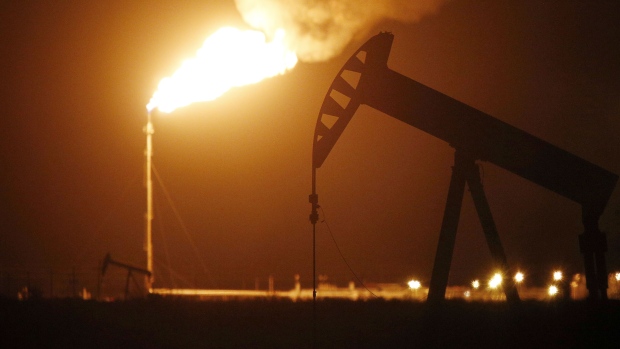Oct 3, 2018
Oil steadies near 4-year high as supply fears counter stockpiles
, Bloomberg News

Crude seesawed near a four-year high as Iran’s dwindling presence in global markets overshadowed the steepest increase in U.S. oil stockpiles since March 2017.
Futures briefly fell as much as 1.2 per cent in New York on Wednesday before retracing losses. Crude inventories in the world’s largest economy increased at five times the pace predicted in a Bloomberg survey, fueled in part by rising imports and a dip in foreign demand for American oil. Impending U.S. sanctions are scaring buyers away from Iranian cargoes, heightening concern about a worldwide supply squeeze.
“Those of us that count barrels are anxious to see how much Iranian production actually falls next month and then how much Saudi Arabia and Russia will actually make up from any losses,” said Brian Kessens, who helps manage US$16 billion in energy assets at Tortoise.
Russia and Saudi Arabia are pumping an extra million barrels of crude daily and the Russians could add another 200,000 to 300,000 barrels within a “few months,” Energy Minister Alexander Novak said. Meanwhile, even some of Iran’s most loyal customers are growing skittish about defying the U.S. by purchasing cargoes from the Islamic Republic.
West Texas Intermediate for November delivery climbed 37 cents to US$75.60 at 11:14 a.m. on the New York Mercantile Exchange. Total volume traded was about 10 per cent below the 100-day average.
Brent for December settlement advanced 63 cents to US$85.43 on the London-based ICE Futures Europe exchange, the highest level since 2014. The global benchmark crude traded at a US$9.96 premium to WTI for the same month.
The Energy Information Administration on Wednesday reported that U.S. crude imports gained while exports slid by the most since late July.
“The build isn’t due to anything like production increasing in the U.S. but is more transient in nature, given that the timing for when ships arrive and when ships leave from the Gulf Coast isn’t always consistent on a week-by-week basis,” Kessens said.


